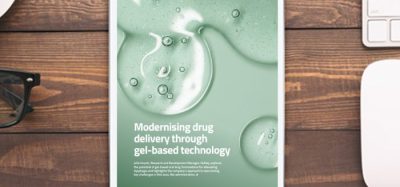QA of prostaglandin analogues for glaucoma treatment
Posted: 11 November 2022 | Caroline Peachey (European Pharmaceutical Review) | No comments yet
Paper highlights trends in developing analytical procedures to assess the quality of prostaglandin analogues used to treat glaucoma.


A paper, published in the European Journal of Pharmaceutical Sciences identified the quality assurance (QA) challenges and trends of analytical techniques in ocular drug delivery and formulation, focusing on treatments for glaucoma.
The paper suggested low bioavailability after topical ophthalmic administration is evidence of the need for more effective molecules, as well as formulations that target sites more precisely. Developments need to be made to enable lower dosages and toxicity, limit adverse effects and find better treatment efficacy of ocular drugs, it stated.
A key challenge discussed is active pharmaceutical ingredient (API) impurity profiling in finished dosage forms. Development of suitable analytical procedures to help detect and quantify the degradation of products is a key objective, according to the authors.
The paper by Asendrych-Wicik et. al focuses on formulations using substances such as prostaglandin F2 alpha (PGF2α) analogues to treat glaucoma. These analogues (latanoprost, travoprost, tafluprost, unoprostone and bimatoprost) are at present the main treatments for glaucoma.
Impurity profiling PGF2α analogues, either in pure form or in the finished formulation is therefore essential for assessing quality. However, developing exact, accurate and precise analytical methods to determine stability of the content and related substances is an important issue.
As part of the study, researchers identified 27 official and in-house chromatographic analytical methods used for the analysis of latanoprost, travoprost and bimatoprost, in pharmaceuticals, medicinal products and cosmetics.
Out of 26 methods presented:
- 12 concerned the testing of the content of substances in a simple formulation
- seven covered testing in combination drugs
- 11 concerned testing related substances and degradation products.
The researchers concluded: “None of the presented non-compendial methods for determining the substance content in pharmaceutical formulations was selective for 5.6-isomers, which can be present in substance in levels of up to 5% for travoprost and 3.5% for latanoprost.”
Therefore, they suggested that the proposed methods may be biased towards a slight error in cases where isomers are present at a significant but acceptable level.
“Taking into account the high permissible limits of impurities with the isomers mentioned above, it seems that the further search for and development of analytical methods enabling the simultaneous determination of the content of active substances, degradation products and related substances…remains a major challenge,” the paper stated.
Evaluation potential degradation products is also a “vital” to ensure the safety and high quality of ophthalmic prostaglandin analogue products used to treat glaucoma.
Related topics
Analytical techniques, Biopharmaceuticals, Drug Delivery Systems, Drug Development, Impurities, Manufacturing, QA/QC, Research & Development (R&D), Technology









